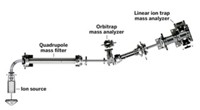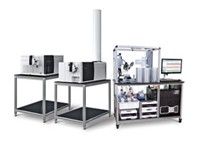Advertisement
Grab your lab coat. Let's get started
Welcome!
Welcome!
Create an account below to get 6 C&EN articles per month, receive newsletters and more - all free.
It seems this is your first time logging in online. Please enter the following information to continue.
As an ACS member you automatically get access to this site. All we need is few more details to create your reading experience.
Not you? Sign in with a different account.
Not you? Sign in with a different account.
ERROR 1
ERROR 1
ERROR 2
ERROR 2
ERROR 2
ERROR 2
ERROR 2
Password and Confirm password must match.
If you have an ACS member number, please enter it here so we can link this account to your membership. (optional)
ERROR 2
ACS values your privacy. By submitting your information, you are gaining access to C&EN and subscribing to our weekly newsletter. We use the information you provide to make your reading experience better, and we will never sell your data to third party members.
Analytical Chemistry
New And Notable At Pittcon: Chromatography & Separations
by Stephen K. Ritter
March 29, 2010
| A version of this story appeared in
Volume 88, Issue 13
COVER STORY
New And Notable At Pittcon: Chromatography & Separations
Shimadzu premiered the Nexera ultraperformance liquid chromatograph, which the company boasts has the largest flow range (0.0001 to 5 mL per minute), highest pressure (up to 19,000 psi), and highest temperature (up to 150 ºC) currently on the market for an analytical instrument. With short injection intervals, Nexera enables fast chromatography with high sensitivity and resolution for high sample throughput. In another innovation, Shimadzu partnered with Ceres Nanosciences and Nonlinear Dynamics to create the Nanotrap Biomarker Discovery Platform, which utilizes core-shell hydrogel particles (nanotraps) in combination with Shimadzu’s Axima matrix-assisted laser desorption ionization time-of-flight mass spectrometers for screening low-level protein biomarkers for disease detection directly from complex biological samples.
Waters highlighted the Acquity UPLC H-Class, the newest member of its popular family of Acquity ultraperformance liquid chromatographs, which includes the Acquity UPLC, nanoAcquity UPLC, and Patrol UPLC industrial process analyzer. The Acquity H-Class is designed with UPLC resolution, sensitivity, and speed, but with the ease of use and familiarity of an HPLC system. For example, it supports both HPLC and UPLC columns and has a quaternary solvent manager and sample manager with flow-through needle design that mimics traditional HPLC system workflow. The instrument is geared toward aiding labs that are transitioning from HPLC to UPLC, including replacing several HPLC instruments with a single UPLC to save on operating and capital costs. Waters anticipates the primary use for the Acquity H-Class will be in combination with its Synapt G2 quadrupole time-of-flight mass spectrometer, which was introduced in June 2009. Waters also introduced size-exclusion chromatography columns for monoclonal antibody aggregate analysis, which the company says are the first UPLC columns for SEC applications.
(4) Eksigent exhibited the ExpressLC-Ultra, a new generation of the company’s low-flow high-performance liquid chromatography systems. The instrument combines the best features of microscale HPLC at ultraperformance liquid chromatography pressures—the instrument uses 90% less solvent than standard HPLC systems for fast analyses with high reproducibility. Designed for drug discovery and life sciences applications, ExpressLC-Ultra uses Eksigent’s microfluidic technology with a charge-coupled device UV detector (200–375 nm). Flow rates from 1 to 50 mL per minute are possible through a fiber-optic flow cell (shown lower right in photo) at column pressures up to 10,000 psi, which permits the use of ultraperformance sub-2-mm particle columns. As part of a flurry of merger and acquisition activity surrounding Pittcon, newly minted company AB Sciex announced on Feb. 16 that it had purchased Eksigent’s LC business to complement its mass spectrometry instrumentation; the Eksigent brand is being maintained.
Dionex debuted the ICS-5000 Reagent-Free Ion Chromatography system, the first capillary ion chromatograph on the market. ICS-5000 combines standard bore, microbore, and capillary column formats with conductivity, UV-Vis, and other detector options all in one modular system. The innovative Cap IC Cube module allows convenient color-coded plumbing of capillary columns and easy exchange of cartridge-based consumables such as guard columns. The module also includes an ion generator suppressor for generating ions and a degasser. ICS-5000 operates at up to 6,000 psi to achieve high flow rates with only 0.4-µL samples, shortening run times in capillary mode to as little as three minutes, which is favorable for metabolomics. Using IC x IC techniques in capillary and analytical modes, chemists can use ICS-5000 to achieve ultralow detection limits without investing in a mass spectrometer. The instrument includes Dionex’ “reagent-free” system to generate and recycle its own eluents, which means it is always on and running. The ICS-5000 can operate continuously for three months using only 2 L of deionized water at capillary flow rates, or a full year using only 5.25 L of water.





Join the conversation
Contact the reporter
Submit a Letter to the Editor for publication
Engage with us on Twitter